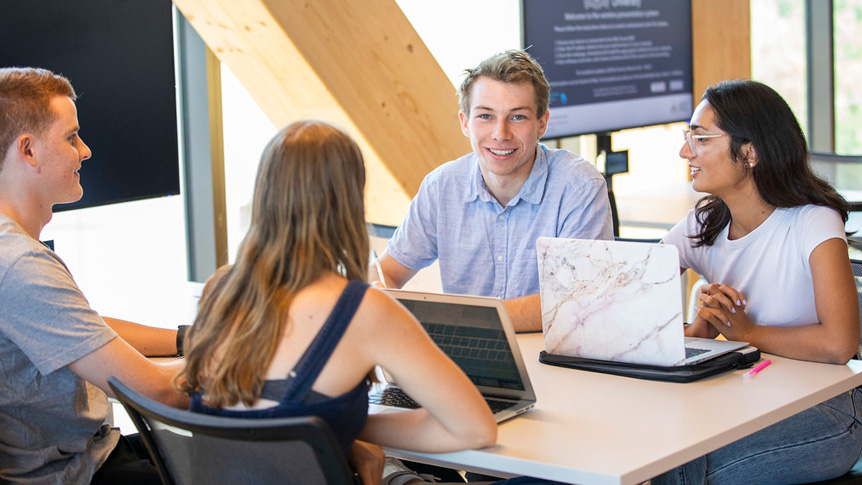Students often feel anxious during group work
As research shows that social skills are regarded higher than content-related skills when it comes to employability, conveners are increasingly using group work as an assessment tool to equip their students for life beyond their degree. However, students can be apprehensive about working with others, and often experience social anxiety when faced with group work, particularly when they do not know their group members. Add in the fact that after two years of remote learning and lock-downs, young adults are particularly at risk of increased social anxiety, and that first year students are more likely to already be suffering feelings of loneliness and anxiety, and we suddenly have a pretty challenging scenario when wanting to facilitate effective group work.
As the convener of Australia’s Environment (ENVS1004), one of the largest courses at the Fenner School of Environment and Society (167 enrolments this year), I acknowledged these challenges and used research in psychology to increase students’ sense of belonging in their groups. The outcome surpassed even my expectations and my approach has led to some wonderfully effective in-class collaboration.
Using science to foster friendships
Wanting to encourage students to grow their teamwork and social communication skills, I introduced a group project to my course this year. Students were randomly assigned to groups of 5–6 peers and were tasked with working together all semester on a contemporary Australian environmental issue of their choice. The challenge was how to get these students to work together collectively and to feel comfortable doing so. As a scientist, naturally, I looked to science for help.
In 1997, Aron and colleagues published a psychology study outlining a procedure to ‘generate interpersonal closeness’. The study quickly attained notoriety and has been touted by many pop magazines and papers as ‘The 36 Questions to Fall in Love’. But it’s not really about falling in love. The paper is really about accelerating a feeling of closeness between strangers by asking a specific series of questions. These questions encourage you to share and disclose personal information – a practice which can establish the building blocks of true friendship. I recognised the questions’ potential for helping my students.
In the first workshops of the semester, when students were assigned to their groups, I asked everyone to complete a survey asking how comfortable they felt working with their group members, and how close they felt to others in their assigned groups. Perhaps unsurprisingly, more than half of the students said they felt either uncomfortable or neutral about working in their group, and a whopping 92.5% said they did not feel close to their group members.
I then had students perform the exercise outlined in the 1997 paper: the students would take turns in asking each of their group members a series of 36 questions. This exercise lasted for almost an hour. I was nervous that students would be shy and would not engage with the activity. My tutors were ready to help prompt conversation and on the lookout for groups that weren’t interacting. But once the exercise started, to my surprise, the whole room was filled with laughter, and students were talking and sharing. The tutors and I just stood back as no one needed prompting. All 167 students were engaged and open and making real connections. It was incredible to watch.
The proof is in the numbers – students felt more comfortable and closer to their group members
After the exercise, students were again asked how comfortable they felt working in their group, and how close they felt with group members. After only an hour spent with each other, 90% of students said they felt comfortable or very comfortable working with their group members, and 61% said they felt close or very close to their group members (with a further 31% feeling neutral). Remarkably none of the 51 students who said they “did not feel close at all” with their group at the outset of the exercise, felt that way after performing the exercise.
The takeaway – using research-led practices to enhance social communication is key
Using targeted practices to help foster important social skills can be extremely effective and successful. More than this, applying such practices can provide fun and engaging ways for students to build relationships. Having the skills to build relationships not only makes our students more employable, it also increases their feelings of belonging and enjoyment while at university. It is important to create a sense of community amongst our students. After all, university is about so much more than the content, and many of these students will be colleagues one day.
October 2022
Dr Nici Sweaney is a lecturer, Honours and Masters Coursework Convener in the Fenner School of Environment and Society.

